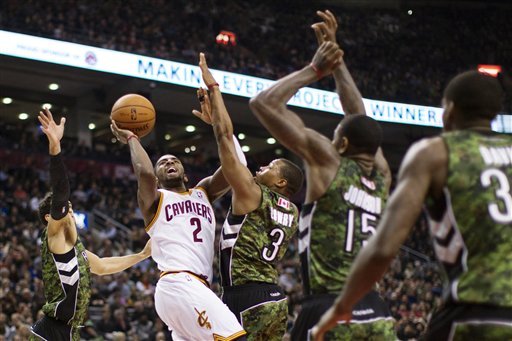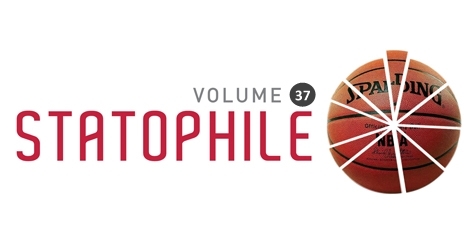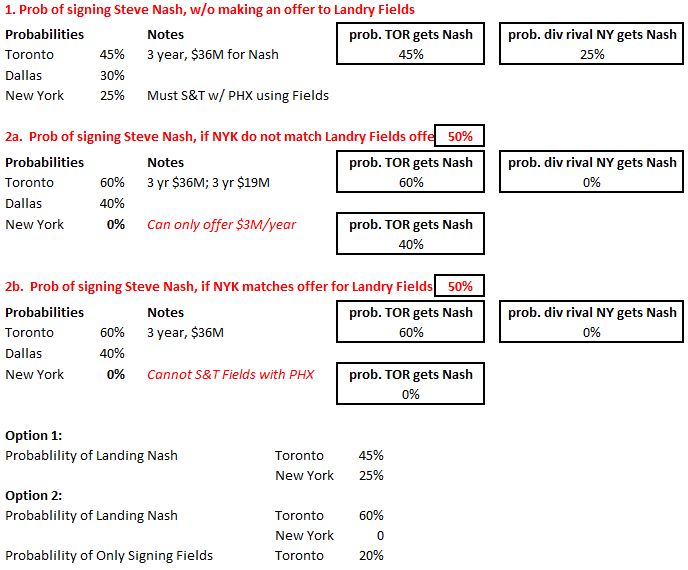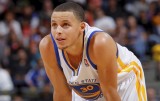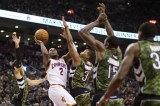Five Points on Fields
- You could listen to Bill Simmons

or you could rub a few facts together. I know its hard. But if you bothered to look, Landry Fields played the second most minutes of any Knick last year. No, he wasn’t the 11th man as much as you wanted to believe it (thinking is hard). And the offer is for $19 million. And its back end loaded. And Steve Nash turned 38 this past February. But making crap up to illicit a passionate response is the name of the game and Bill knows clicks are clicks (yes, we advertised it as well and most everyone simply accepted it as the gospel). - You could also look at the the structure of the deal. Some of the very same Raptors’ fans endorsed Daryl Morey’s move to offer offensively challenged Omer Asik $25 million over THREE years as brilliant. Why? It was a “poison pill” type structure – in this case severely back end loaded, which essentially guarantees Chicago cannot match (note: this is not a direct comment on the merits of the Asik deal – I realize he’s an excellent defender). Landry Fields’ reported deal starts (see TSN’s Tim Chisholm’s article) at $5 million this year and ends at $8.9 million (see more on this later). Houston needed a big defender while Toronto needed a wing scorer. Why isn’t this deal structure just as brilliant?
Maybe its even more so. Thankfully, reporters like Chisholm caught it right away: “Without a sign-and-trade, the Knicks are stuck at offering Nash only $3 million per year, or roughly one-quarter of what the Raptors are prepared to pay to get a deal done […] if the race is really between Toronto and New York, Colangelo’s pre-emptive strike against New York’s sign-and-trade options illustrates the seriousness with which he covets Nash as a future Raptor. Of course, Fields is more than just a pawn in the Nash chase; he’s a player that the Raptors are going to integrate into their attack next season.”
- Landry Fields can spend minutes at SF. Some have speculated DeRozan would have to move full time to SF. For New York last season, he spent more than half his time at the 3 spot. He’s 6’7″ and can match up fine in many situations there.
- Some have also noted Fields’ shot only 25.6% from beyond the arc last year versus a hot 39.3% in his rookie year. This was obviously cause for concern. However, if you think about the “new look” Knicks offense (predicated on little ball movement, except for Lin) in his second year, it is understandable. Last year, NYK had the 4th highest turnover rate and was ranked 22nd in % of field goals assisted on. As an example, Fields’ 2pt FG% “improved from 50.2% to 55.7% playing with Jeremy Lin last season” (as per Kevin Pelton). Its likely he’s not a 40% three point shooter, nor a 25% shooter. Coupled with a pass first PG that can also shoot (hint: Nash or Calderon), he’s likely somewhere in between.
- His adjusted +/- is quite good. Yes, this can be “noisy”, but (click image to see it completely)

Fields appears to make positive contributions to both offense and defense when on the floor. Fields has the best 1 year and 2 year adjusted +/- of all Knicks who played over 1,000 min last season. And Landry just turned 24 and most players continue to improve significantly at this age.
Net, net: its a very smart gamble.
You miss 100% of the shots you don’t take. – Wayne Gretzky
This is a shot worth taking. This is not 30 year old, beat up Jermaine O’Neal. This is not a four year deal for a defensively challenged Jason Kapono.
Here is an example of the decision tree (well, its not exactly a “tree”, but you get it) I would make in this situation:
I’m sure I could’ve displayed this better, but I hope you get the idea. The most important piece of the analysis is the removal of New York from the Nash equation (although *maybe* they could try a sign and trade with Lin + parts, but I don’t see it) and thus the increased odds of Nash joining Toronto. It also introduces option 2b, which not only lands Nash in Toronto (again making it near impossible for NYK to be a factor), but also has them accepted a large deal in the face of mega deals for Carmelo and Amar’e. Thus, 2a becomes a likely scenario and is not without risk. Toronto could increase its odds to land Nash, but still has a chance of only landing Fields – I peg this scenario at 20%. In this worst case scenario, we’d be paying a player that is much more productive than most believe, especially when part of a pass first PG and better ball movement. At $5M or so the first two years, then an expiring deal, this is a bold but calculated move. If you are concerned by the combined 3rd year salary for scenario 2a, then consider the dramatic increase in revenue MLSE will get by this move. Would the Raptors average attendance go from 16,800 last season to something like 19,500 like it was in 2008? Using TMR’s Fan Cost Index of approximately $75 a ticket, that’s $25 million in additional ticket revenue alone. Add increased money for TV deals (viewership would be up significantly with Nash), a few playoff games (~$2 million per game in ticket revenue alone), merchandise, Real Sports etc and you could probably double it. So, by year 3, MLSE will have significantly more resources handle these salaries and deal with any potential cap tax issues (i.e. will be able to easily handle deals which put them over the cap – given the large amounts Nash and Fields will earn in year 3).
There are very few “no risk” deals. Teams always have to balance risk and reward. I believe the Raptors have been savvy with this deal. It’s always a gamble, but this is a good one.
Questions? There is a dedicated to “Statophile Q&A” forum thread here . If you prefer to send questions privately, you’re welcome to email me at tomliston [at] gmail [dot] com or find me on Twitter (@Liston).


